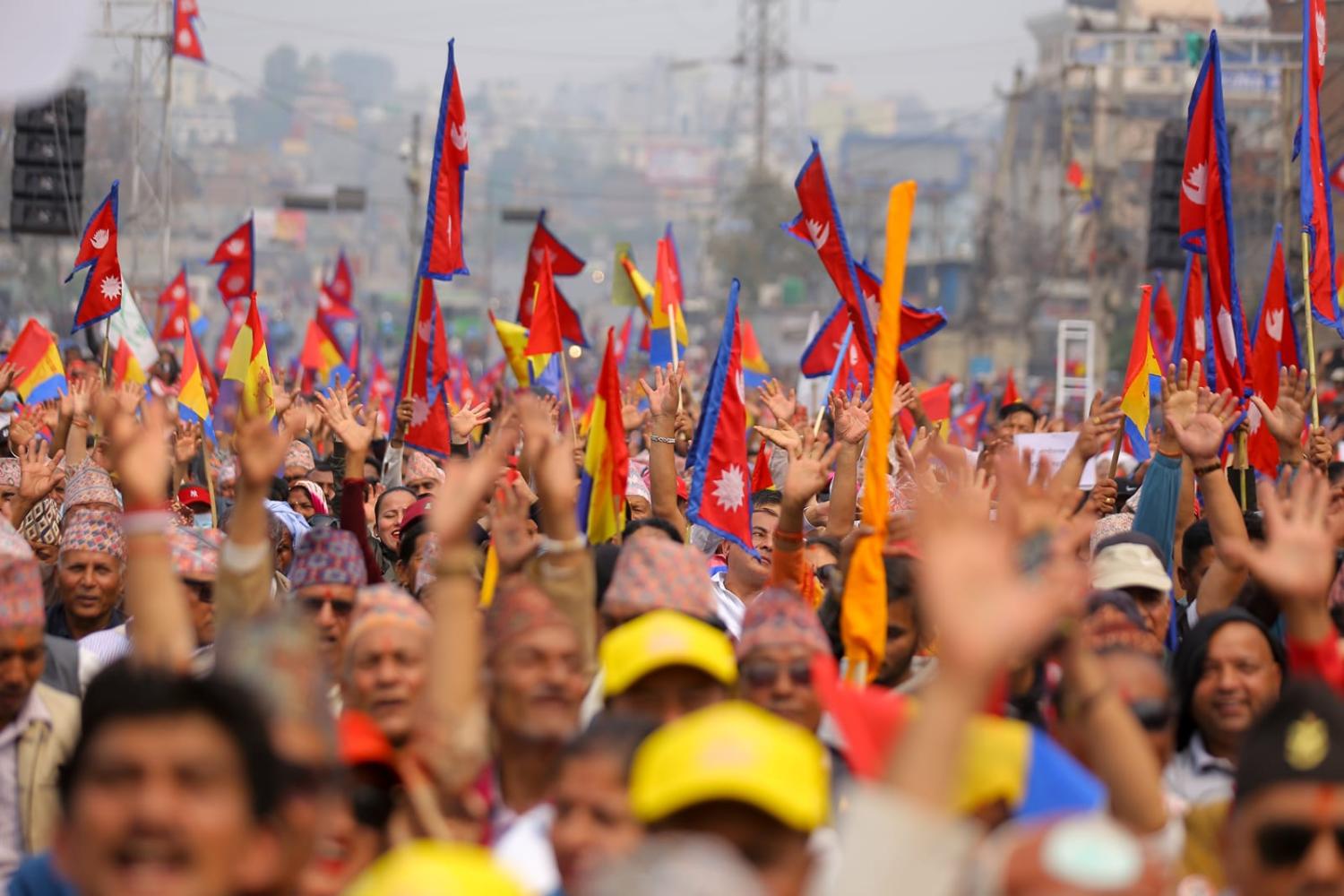Nava Thakuria
As the pro-monarchy movement in Nepal gains momentum, some political leaders start pointing fingers at India for lending inherent support to the agitation to restore former Nepal Nripati Gyanendra Shah in the historic Narayanhiti palace. The tiny Himalayan republic shares a border of over 1,850 kilometer with Uttarakhand, Uttar Pradesh, Bihar, West Bengal and Sikkim, where Assam supports a sizable Nepali speaking population, the ongoing turmoil has drawn a rapt attention from the people of northeast India as well.
Incidentally a royalist movement leader was picked up from Assam on 11 April and probably sent back to Kathmandu. Durga Prasai, who is accused of leading a violent protest in Kathmandu held on 28 March (killing three individuals including a Nepali television journalist) was arrested by the Nepali police from Jhapa district bordering India to avoid any complication from a non-functioning extradition treaty with Nepal. It’s assumed that the Assam police personnel detained Prasai from Guwahati and handed over to the Nepal police authority.
The Geneva-based global media safety & rights body Press Emblem Campaign (PEC) expressed shock over the killing of journalist Suresh Rajak and demanded a fair probe into the tragic incident that led to his death. PEC president Blaise Lempen, while expressing profound grief at his untimely demise of Rajak, urged the government to adequately compensate the bereaved family. He also revealed that Rajak was the first journalist to be killed in Nepal since 1 January 2025 where he is the 44th journalist killed globally this year.
The prolonged political instability in the government, rampant corruption and public sufferings in daily life & living have convinced the indigenous Nepali citizens that all political parties are fighting for their personal benefits only. Both the ruling and opposition leaders continue enjoying power in a rotational manner and in no way interested to address public grievances (or welfare to the common people). Taking advantage of the situation, the pro-royalist Rastriya Prajatantra Party denounced all the political entities and continued pursuing the return of Gyanendra Shah to the royal palace.
The KP Sarma Oli government in Kathmandu has already arrested hundreds of protesters who are demanding to bring back former king Gyanendra. Even the government accused him of inciting violence and lately decreased the number of security personnel (from 25 to 15) engaged with him. It has also planned to cancel the former king’s passport and the Kathmandu metropolitan authorities levied a cumulative penalty of Nepalese Rupees 793,000 against him. PM Oli even alleged that Gyanendra was inherently supported by Uttar Pradesh chief minister Yogi Adityanath.
Needless to mention that, a hardcore Hindu nationalist Adityanath publicly supported the reinstatement of Nepal’s Hindu identity. The Bharatiya Janata Party leader hosted many visits of Gyanendra to Lucknow. A politician, always seen in saffron attires with a shaved head adoring a sacred Tilak on his forehead and male ear Kundals, even addressed a public meeting in Kathmandu ten years back to propagate Nepal’s century old identity. In some protest programs, the agitators even carried Adityanath’s cut out along with the former king’s life size photograph.
However, a lead article in The Kathmandu Post newspaper elaborated ‘why monarchy is unlikely to return’ in Nepal. The piece insisted that Nepal’s future lies in addressing present challenges, not reviving the past. Gyanendra’s hopes still rests on a political mobilisation he has yet to undertake. The crown remains a relic—its restoration as improbable as conjuring a feast from the ether. Nonetheless, Nepal must navigate the challenges of its republic listening to the agitators sincerely, it added.
Nepal remains an independent country, but it enjoys proximity to Indian culture and philosophy. Prime Minister Narendra Modi, while meeting with Nepal premier during the 6th BIMSTEC summit in Bangkok on 4 April reiterated that being the largest democracy across the globe, India will always prefer a democratic Nepal. However, a large number of Indian people expressed their annoyance when Nepal changed its identity from being the last Hindu kingdom in the world to a federal republic in 2008. Today, a large section of Nepali people realise that the monarchy is an outdated idea and its full restoration will be an impractical idea, but they insist on restoring the king at the royal palace to play the symbolic role as the Head of the State.





